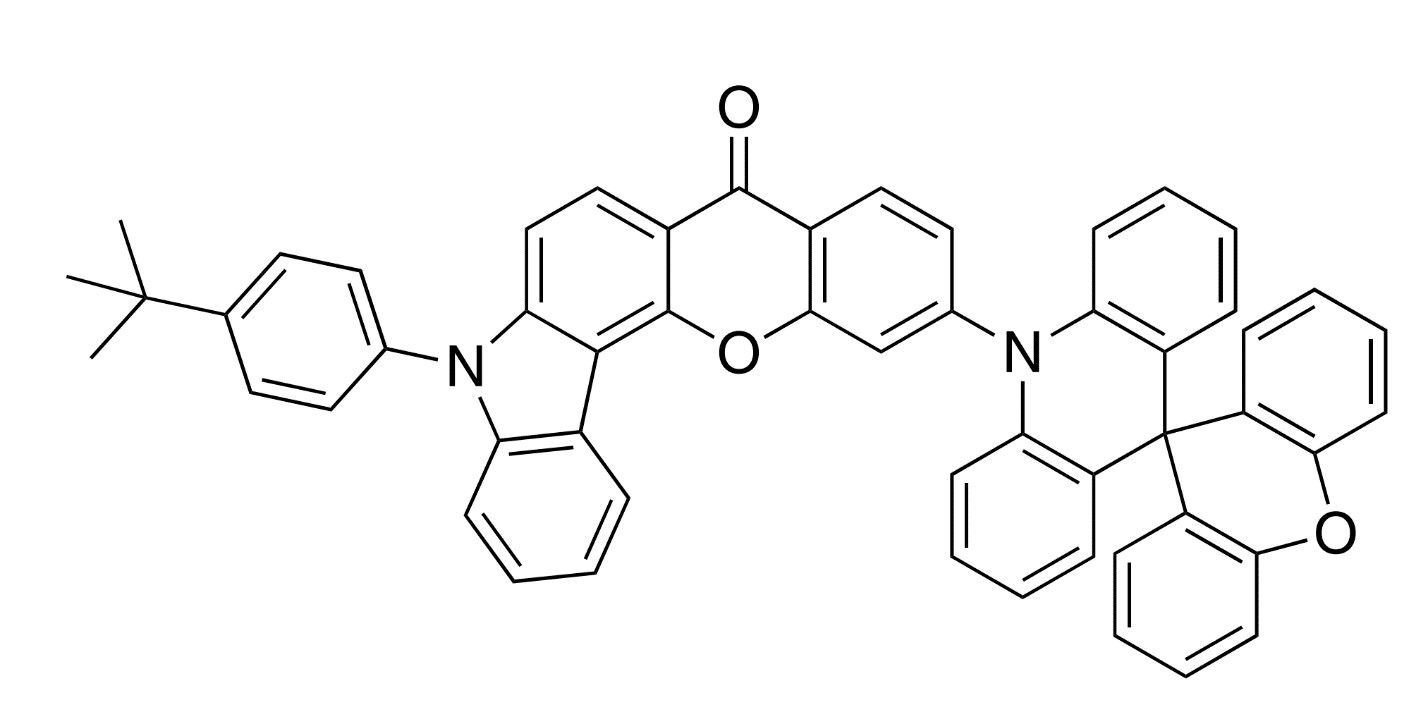CCO-2
Product Description
CCO-2, chemically identified as 5-(4-(Tert-butyl)phenyl)-11-(10H-spiro[acridine-9,9'-xanthen]-10-yl)chromeno[3,2-c]carbazol-8(5H)-one, represents a complex organic molecule designed for applications in advanced optoelectronic technologies. Its molecular architecture combines elements of chromenocarbazole with spiro-acridine-xanthene structures, incorporating a tert-butyl group for enhanced stability. This unique combination endows CCO-2 with superior photophysical properties, including high quantum yield and extended fluorescence lifetime, making it suitable for use in organic light-emitting diodes (OLEDs). Moreover, its structural rigidity and thermal stability contribute to the fabrication of durable and efficient OLED devices, positioning CCO-2 as a promising candidate for future developments in display technology.
Application
CCO-2 is primarily applied in the production of OLEDs, leveraging its exceptional photophysical attributes to achieve higher brightness and efficiency in display panels. Its incorporation into OLED layers enhances the overall performance of these devices, making them more competitive in terms of energy consumption and lifespan. Beyond OLEDs, CCO-2 is also being investigated for potential uses in other optoelectronic devices, such as sensors and photovoltaics, where its stability and optical properties can offer significant advantages.
